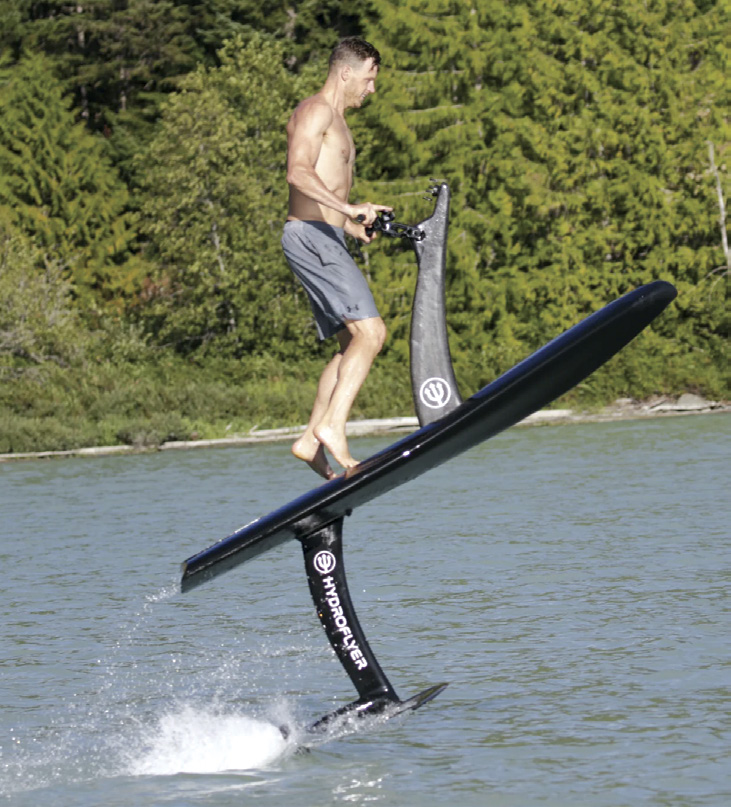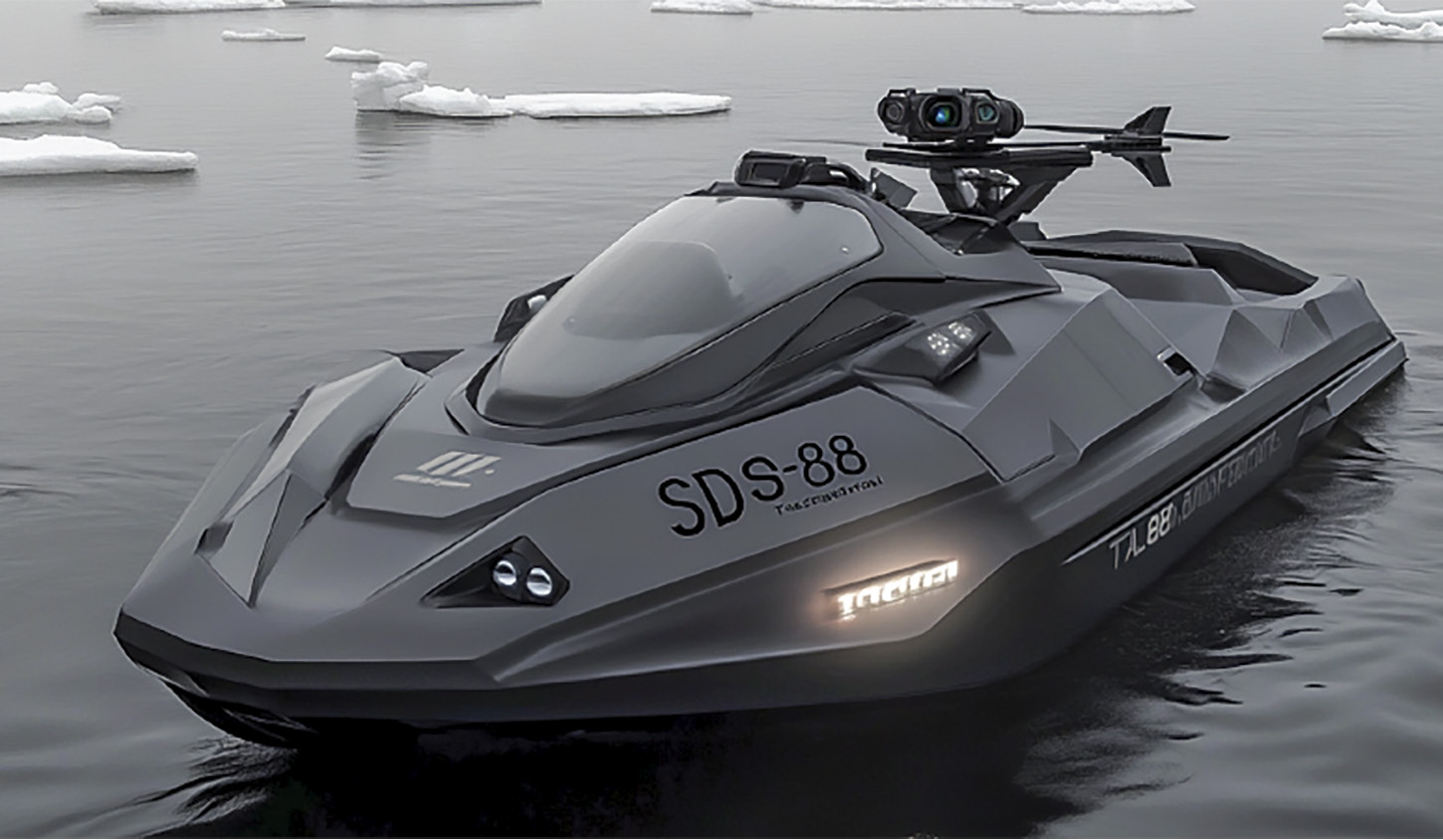Hydroflyer unveils surfboard-inspired Sport Board for watercraft enthusiasts
Get ready for a game-changer in personal watercraft. Hydroflyer has officially launched the Sport Board, a cutting-edge evolution of hydrofoil technology designed for enthusiasts who crave speed, agility, and an adrenaline-fueled ride across the water.
The Sport Board takes the original Hydroflyer vision to new heights, ditching its predecessor’s signature V-nose in favor of an ultra-light swing weight that enhances maneuverability and responsiveness. With an unobstructed view of the water below, riders can carve, glide, and push their limits like never before.
Paired with a smaller foil, this board delivers an aggressive ride, ideal for those who want to charge through waves or even launch off them. For those who prefer a surf-style experience, it can be ridden without handlebars, though riders may never want to go back after experiencing the unmatched control that comes with them.
At 5’5”, the Sport Board is also a versatile option for smaller riders or those looking for a compact personal watercraft that still packs a punch. Optional foot hooks let riders take their tricks to the next level, making inverted aerial moves a real possibility.
Built from carbon fiber from top to bottom, including the frame, upper mast, and handlebars, Hydroflyer’s latest innovation is engineered for maximum strength and minimum weight. And with a 2.45 KWH lithium-ion battery, riders can expect anywhere from 1.5 to 3 hours of runtime, depending on how hard they push their limits.
PWC enthusiasts should take note — this is more than just a ride; it may be the next big thing. However, at this time, it is only available through Hydrofoil’s e-commerce site with an MSRP of $15,995. We will keep you updated if they open a dealer network.

The Sport Board takes the original Hydroflyer vision to new heights, ditching its predecessor’s signature V-nose in favor of an ultra-light swing weight that enhances maneuverability and responsiveness. (Photo: Hydroflyer)
Bombardier’s new concept could redefine marine patrol and border defense
Could a PWC-shaped drone redefine border surveillance? That was the question posed by Canadian innovator Charles Bombardier on his LinkedIn page, when he shared his vision of the Sea-Drone 88 (SD-88), a stealth personal watercraft that would patrol logistically difficult waterways.
Bombardier, whose grandfather invented the first snowmobile and started the company that spun into what is now BRP, says the SD-88 is a concept for an autonomous, electric-powered personal watercraft designed to patrol sensitive rivers, coastal zones, and Arctic waters.
With growing attention towards national security and border patrol, Bombardier says many of today’s tools are ill-suited for persistent, low-profile patrols.
The SD-88 would be based on a high-performance platform, such as the BRP Sea-Doo RXT-X, powered by a 325 hp BRP/Rotax marine engine. It would be stripped of seats and handlebars and reengineered for autonomous operation.
It would feature an electric or hybrid propulsion for silent operation, stabilized HD and thermal imaging cameras, satellite communication, impact-resistant Kevlar hull, towing gear and modular payload bay.
He proposes that units could be deployed from mobile trailers, ships, or shore stations and navigate pre-mapped patrol routes using onboard AI. They would send real-time feeds to command centers and operate day or night, adjusting behavior based on activity.
The autonomous SD-88 would still be overseen through secure dashboards by remote operators, and the interface would allow remote control if needed. It would also include collision avoidance and geofencing and be compact enough for it to be launched and retrieved by two people with minimal equipment.
In addition to its core surveillance roles, SD-88 could be outfitted with mission-specific modules for higher-risk deployments. Examples could include non-lethal deterrents such as flare or smoke launchers; electronic warfare tools for localized jamming or interference; remote-operated micro turrets, offering light payloads; and laser target designators for coordination with aerial or ground assets.
And in today’s political climate, Bombardier says platforms like SD-88 could support new modes of collaboration between allied nations.
“Sea-Drone 88 could become a flexible tool within shared security frameworks,” Bombardier writes. “Its deployment along waterways like the Rio Grande, Chiapas rivers, the St. Lawrence, and even the Bering Strait, could support both sovereignty enforcement and humanitarian missions. Arctic patrols, conservation monitoring, and cross-border coordination could all benefit from a common autonomous platform.”
This conceptual idea was originally released with the help of industrial designer Matt Betteker and first published in The Globe and Mail on Oct. 22, 2014.

The Sea-Drone 88 would have three modular variants: Tactical for border patrol and night surveillance ; Arctic, cold-adapted with ice-resilient hull and long-range communications; and COMMS, acting as a mobile communications relay or surveillance node. (Images: Charles Bombardier)
Skeeter’s 31st annual bass tournament to be held June 7-8 on Lake Fork in Texas
Skeeter Boats, a subsidiary of Yamaha Motor Corp., will host the 31st annual Skeeter Owners Bass Tournament on Lake Fork, Texas, June 7–8.
Anglers will compete for more than $250,000 in cash and prizes in an individual Big Bass tournament format. Each angler may weigh in one fish per hour, with prizes awarded to the top 10 fish each hour, giving anglers 130 chances to win.
“This tournament is where the Skeeter family comes together,” says Chris Brown, brand marketing manager for Skeeter Boats. “It’s about more than big bass, it’s about celebrating our shared love for fishing, family, and the outdoors.”
The angler who catches the biggest bass overall will win a 2025 Skeeter FXR20 Apex Edition with a Yamaha VMAX SHO 250 outboard. The largest bass under the slot limit wins a 2025 Yamaha Viking VI EPS Ranch side-by-side.
During Friday’s check-in and registration, anglers will have the opportunity to meet and receive autographs from some of the top names in professional bass fishing including Skeeter/Yamaha Pro Anglers Easton Fothergill, Jason Christie, Brandon Palaniuk, Scott Canterbury, Bryant Smith, Mark Menendez, Cliff Pace, John Garrett, Ray Hanselman, Carl Jocumsen, Drew Cook, Justin Atkins and Tyler Williams.
The entry fee is $150 per person and covers both days of competition if submitted by May 31. Registration forms submitted after this deadline will include an additional $20 on-site registration fee. Limited edition TFO rods are available for purchase onsite or with online registration, but quantities are limited.

The 31st annual tournament welcomes thousands of Skeeter boat owners for two days of fishing and prizes, including a 2025 Viking UTV for the largest bass. (Photo: Wende Ann Photography)